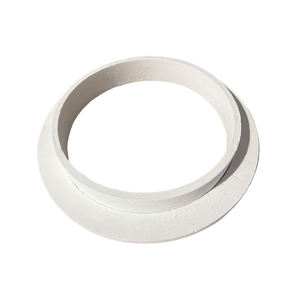Discover Premium Ceramic Products | Durability & Elegance United | Advanced Ceramics
1. Introduction
Just 24 hours ago, a major foundry in Ohio reported a 30% increase in furnace downtime due to premature silicon carbide crucible failures—most traced back to improper preheating and thermal shock. This incident underscores a widespread but avoidable issue in both industrial and hobbyist metal casting: mishandling of high-performance crucibles. If you’re working with molten metals, glass, or high-temp ceramics, knowing how to correctly use a silicon carbide crucible isn’t just about efficiency—it’s about safety and cost savings.

Silicon carbide crucibles are prized for their exceptional thermal conductivity, resistance to thermal shock, and ability to withstand temperatures above 1600°C (2912°F). But even the toughest silicon carbide ceramic can crack or degrade if used incorrectly. This guide gives you a clear, step-by-step approach to using and maintaining your crucible—plus tips on related products like silicon carbide ceramic baking dishes, tubes, and silicon nitride alternatives.
2. Understanding Your Silicon Carbide Crucible
Before diving into usage, it’s important to recognize what sets silicon carbide apart. Unlike traditional clay-graphite crucibles, a silicon carbide crucible is made from sintered silicon carbide—a compound known for hardness second only to diamond. This makes it ideal for melting non-ferrous metals like aluminum, copper, and brass.
Don’t confuse it with silicon nitride crucibles, which offer even higher thermal shock resistance but at a premium cost. While a silicon nitride crucible factory might produce units for aerospace or semiconductor use, most foundries and jewelers rely on silicon carbide for its balance of performance and affordability.
3. Step-by-Step Guide to Using a Silicon Carbide Crucible
3.1. Inspect Before Use
Always check your crucible for cracks, chips, or glaze flaking. Even hairline fractures can lead to catastrophic failure under heat. If you spot damage, retire the crucible—it’s not worth the risk.
3.2. Dry Thoroughly
Moisture is the enemy. If your crucible has been stored in a humid environment or washed, dry it slowly in an oven at 110°C (230°F) for 2–4 hours before use. Trapped water turns to steam during heating and can cause explosions.

3.3. Preheat Gradually
Never place a cold crucible directly into a hot furnace. Instead, ramp up the temperature slowly:
- Stage 1: 150–200°C (300–390°F) for 30 minutes
- Stage 2: 600–800°C (1110–1470°F) for another 30–60 minutes
- Stage 3: Bring to operating temperature
This gradual preheating prevents thermal shock—the leading cause of crucible failure.
3.4. Charge Carefully
Add metal or material gently. Dropping heavy ingots can chip the crucible interior. Use clean, dry charge materials to avoid chemical reactions that erode the lining.
3.5. Avoid Overfilling
Fill only to 75–80% capacity. Molten material expands, and splashing can damage your furnace or cause injury.

4. Cleaning and Maintenance
After use, let the crucible cool naturally in the furnace—never quench it in water. Once cool, remove slag with a soft brush or wooden scraper. Avoid metal tools that can gouge the surface.
For stubborn residues, a light soak in a mild acid solution (like diluted vinegar) may help, but rinse thoroughly and re-dry before reuse.
Store in a dry, dust-free area. Moisture and contaminants accelerate degradation.
5. Common Problems and Solutions
Cracking? Likely due to rapid heating or cooling. Always follow the preheat schedule.
Glaze spalling? Could be from chemical attack—avoid melting reactive alloys like zinc without proper lining.
Short lifespan? You might be using the wrong grade. High-purity silicon carbide crucibles last longer than lower-grade versions.
6. Beyond Crucibles: Related Silicon Carbide and Silicon Nitride Products
While the focus here is on crucibles, silicon carbide’s versatility extends far beyond. You’ll find it in:
- Silicon carbide ceramic baking dishes (like silicon carbide ceramic casserole dish with lid or silicon carbide pie dish) for even heat distribution in ovens
- Silicon carbide ceramic dinner plates and serving bowls—durable, non-porous, and oven-to-table safe
- Industrial components like silicon carbide burner nozzles, silicon carbide brick, and silicon carbide ceramic columns for kilns
- Precision parts like silicon carbide discs, silicon carbide ceramic grinding disc, and silicon carbide thermocouple protection tubes
For extreme environments, consider silicon nitride alternatives: custom silicon nitride heat shields, silicon nitride rings, or silicon nitride plates offer superior fracture toughness.
Note: While boron carbide vs silicon carbide debates exist in armor and abrasives, silicon carbide remains dominant in thermal applications due to better oxidation resistance and lower cost.
7. Conclusion
A silicon carbide crucible is a powerful tool—but only if treated with respect. By following proper preheating, handling, and storage protocols, you can extend its life, improve melt quality, and avoid dangerous failures. Whether you’re in a foundry, lab, or even your kitchen using a silicon carbide ceramic baking pan, understanding the material’s limits and strengths is key. And when you need alternatives, remember that silicon nitride ceramics offer a high-end complement for the most demanding tasks.
Our Website founded on October 17, 2012, is a high-tech enterprise committed to the research and development, production, processing, sales and technical services of ceramic relative materials such as How. Our products includes but not limited to Boron Carbide Ceramic Products, Boron Nitride Ceramic Products, Silicon Carbide Ceramic Products, Silicon Nitride Ceramic Products, Zirconium Dioxide Ceramic Products, etc. If you are interested, please feel free to contact us.
